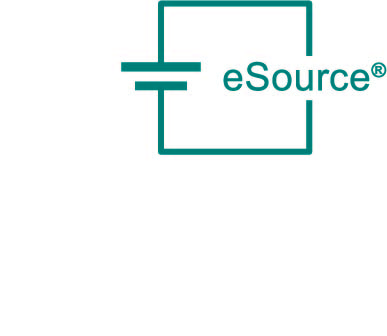In the lighthouse project "Electricity as a resource", new electrochemical processes were developed, technically demonstrated and their coupling with the German energy system analyzed. The results are products, processes and services for the process industry and the energy sector. They are made available under the eSource® brand as a technological research, development and education platform. The concrete results are:
Electrochemical processes
- Production of hydrogen peroxide (H2O2)
- Conversion of carbon dioxide (CO2) to ethene (C2H4)
- Conversion of carbon dioxide (CO2) to short-chain alcohols and acids (high-pressure electrolysis)
- Conversion of carbon dioxide (CO2) to long-chain alcohols (high-temperature co-electrolysis and optimized Fischer-Tropsch process)
Components
- Optimized catalysts
- New electrode systems
- New ion-conductive polymer membranes
System evaluation
- Modeling and optimization tools
- Market analyses and business models
- New methods for sustainability assessment
Competence spectrum for innovations in electrochemical syntheses
- Process development as well as construction and operation of pilot plants (batch and flow-through operation)
- Development and testing of (electro-)catalysts, cells and stacks
- Method for manufacturing and testing electrodes for electrochemical processes
- Development of ion-conductive polymer membranes
- Analytics and characterization of catalysts, electrodes, cells and membranes
- Modeling, simulation and optimization
- System analysis and sustainability assessment
- Innovation Management
- Project and business model development
 Fraunhofer Institute for Environmental, Safety and Energy Technology UMSICHT
Fraunhofer Institute for Environmental, Safety and Energy Technology UMSICHT
